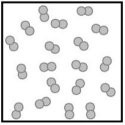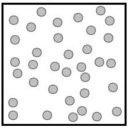Explain how climate change and atmospheric pollution can affect the hydrologic cycle
What will be an ideal response?
"A warmer climate means more evaporation from land surfaces, plants, and water bodies, because evaporation increases exponentially with temperature. A wetter atmosphere means more and, frequently, heavier precipitation and more flood events. Aerosol particles form nuclei for condensation. The more such particles there are, the greater is the tendency for clouds to form. Anthropogenic aerosols are on the increase, primarily in the form of sulfates (from sulfur dioxide in coal), carbon (as soot), and dust. They form a brownish haze that is associated with industrial areas, tropical burning, and dust storms." The "most significant impact" of aerosol particles "is on the hydrologic cycle. The unique size spectrum of the anthropogenic aerosols causes them actually to suppress rainfall where they occur in abundance, even though they encourage cloud formation. As they do so, the atmospheric cleansing that would normally clear the aerosols is suppressed, and they remain in the atmosphere longer than usual. With suppressed rainfall come drier conditions, so more dust and smoke (and more aerosols) are the result."
You might also like to view...
Which of the following images could describe an element at the atomic level?
A. 
B. 
C. 
D. none of the images
E. all of the images
There are four types of conditions that cause air to rise. Which of the following is not one of them?
A) convection B) orographic uplift C) convergence D) fronts E) advection
What evidence reveals that water may once have been abundant on Mars? What will be an ideal response?
An eastern boundary current is generally narrow and swift.
a. true b. false